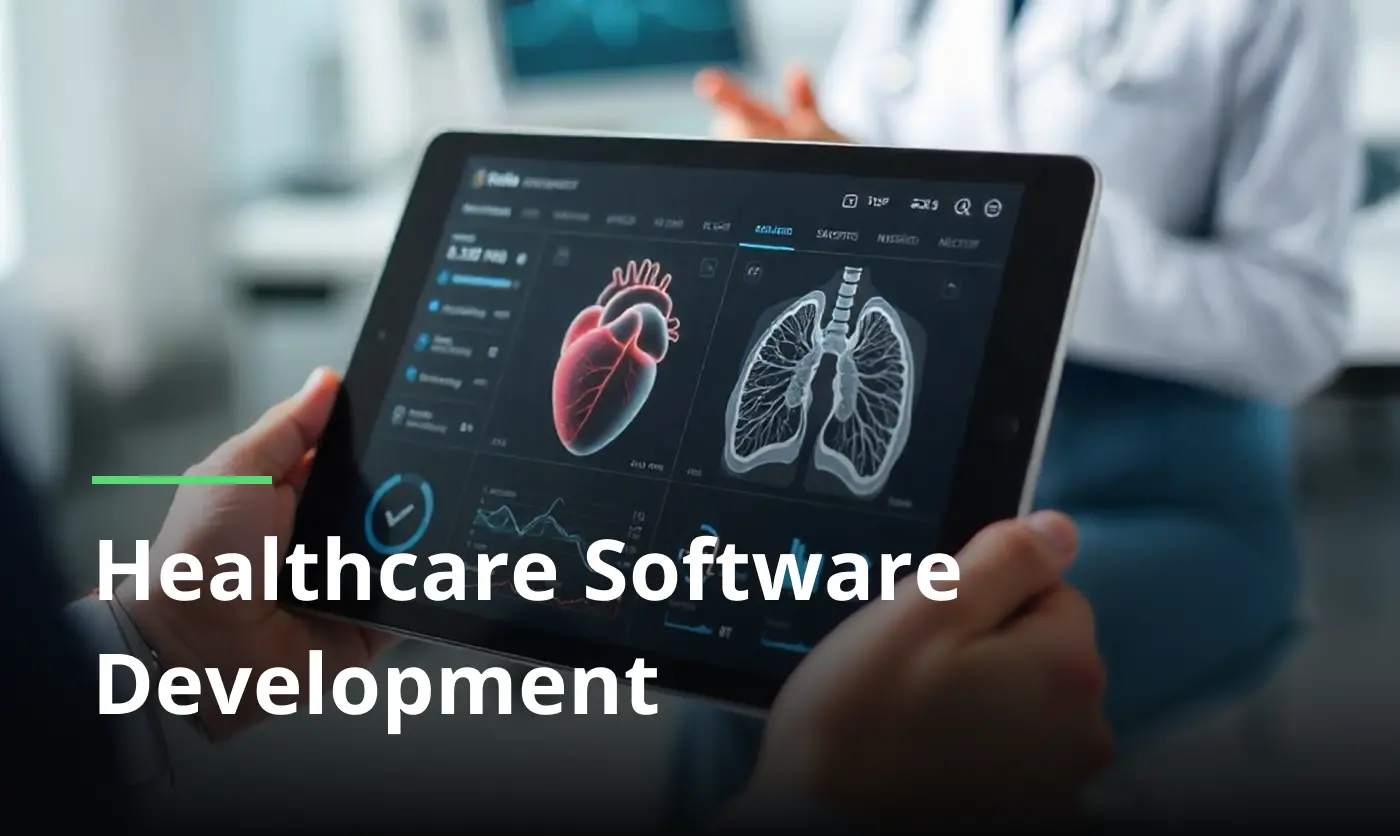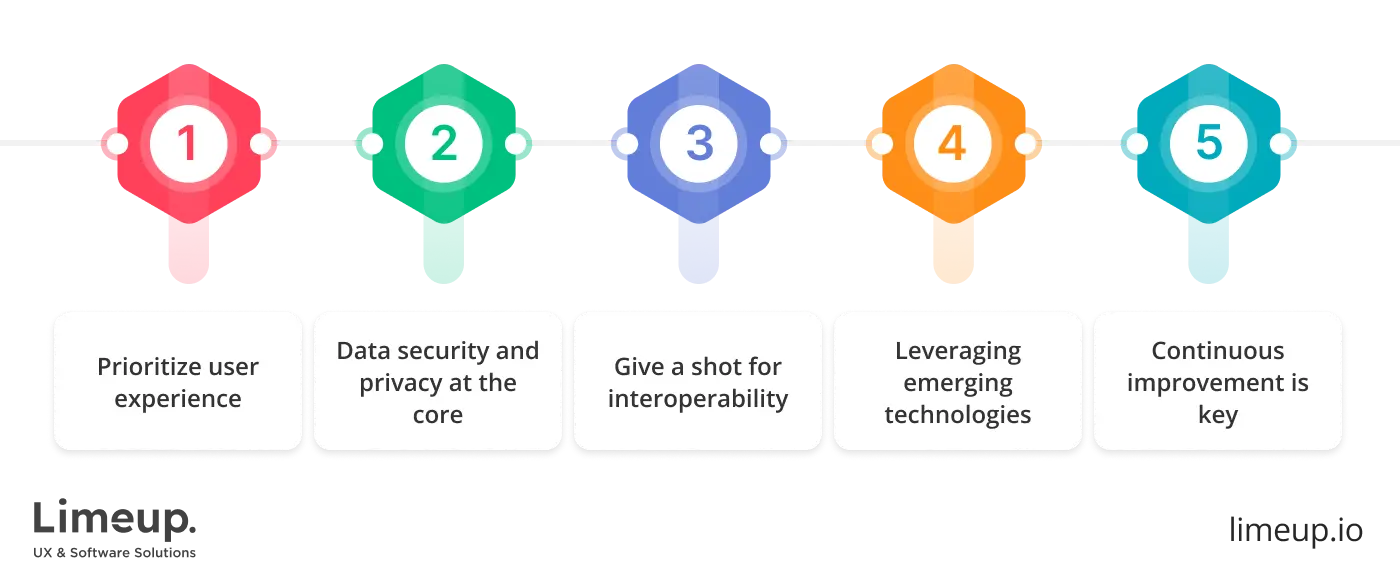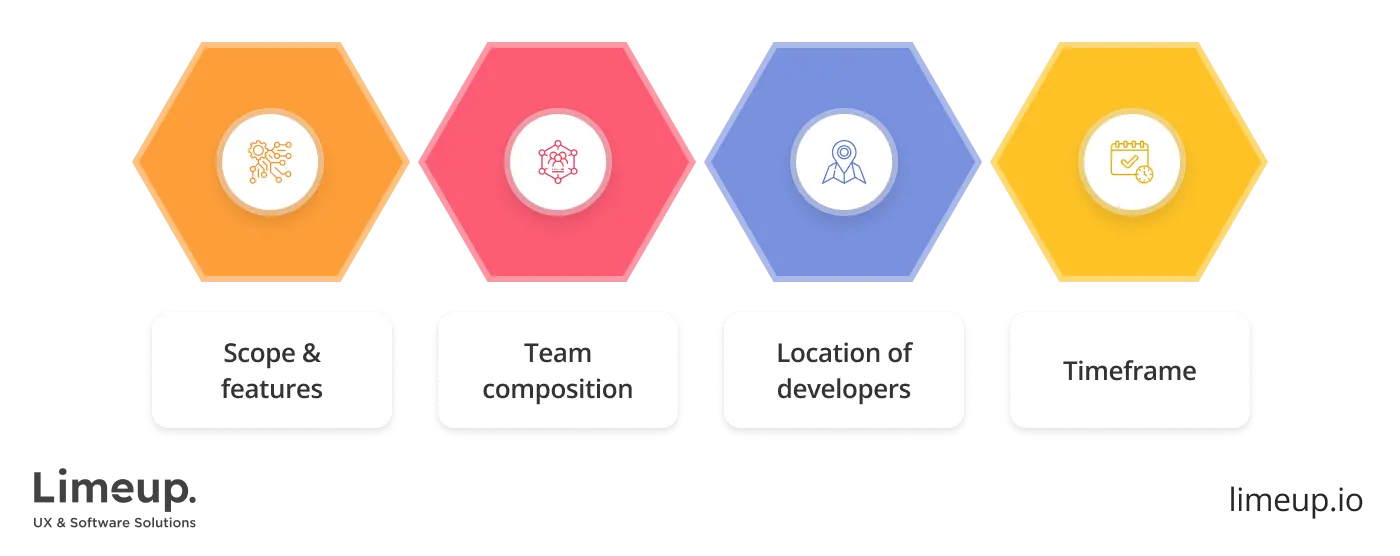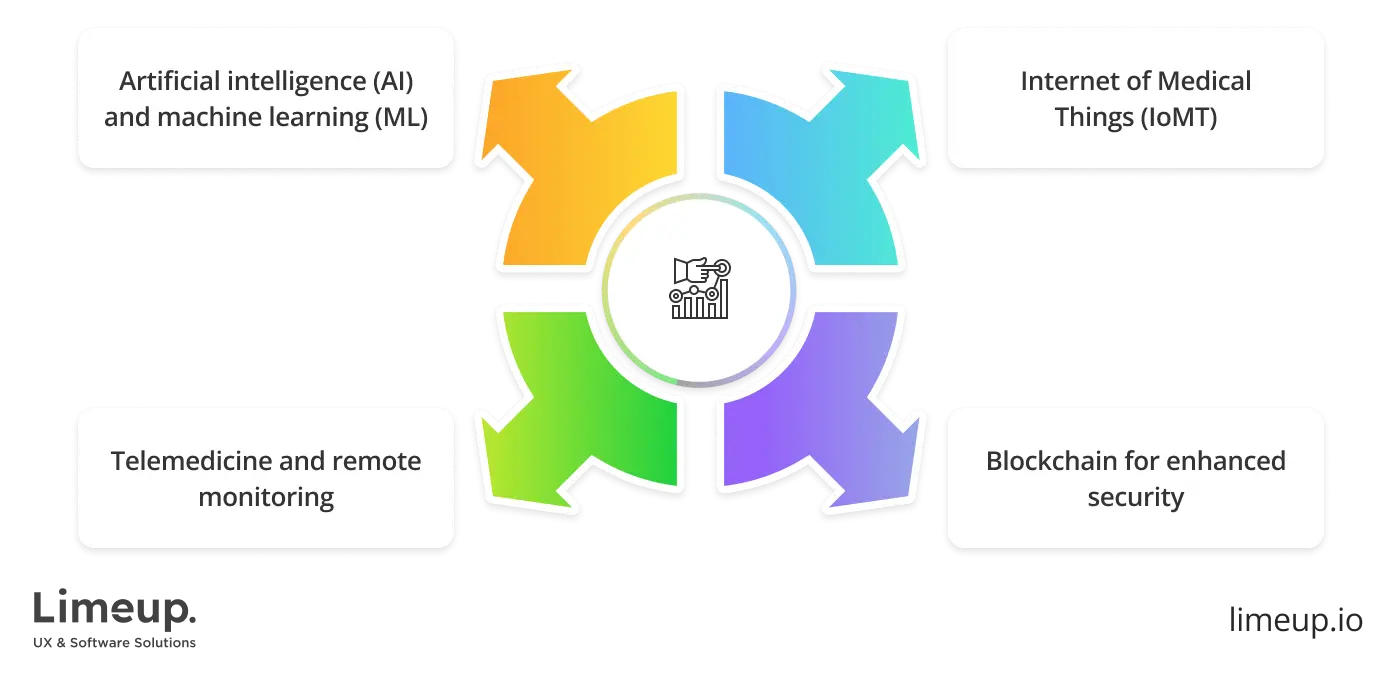Healthcare Software Development: In-Depth Overview

The rise of medical software development has ushered in a new era of care, where ingenuity and fresh concepts walk hand in hand. Advanced applications and systems have fewer repeated processes, freeing up wellness workers to invest their energy in what trully matters instead of tedious documentation. The outline of this overhaul brings to the forefront key elements like enhanced patient coordination, instantaneous data availability.
At the heart of healthcare software development is the capacity to turn visionary ideas into usable tools that give power to care. Engineers create platforms enabling better diagnostics, more consistent communications and refined patient journey. From AI-based analysis to telehealth-associated transformations, these mechanisms are building blocks for integrated tech-driven care ecosystem.
Custom software development for healthcare and pharma presents a broad palette of solutions, each one carefully designed to suit sophisticated industry requests. In this guide, we’ll break down nuts and bolts of these tailored applications, touching on their features, pricing details and the obstacles they aim to clear.
What is a healthcare software development?
E-health software creation entails the creation of digital utilities and apps crafted to advance medical care, move the needle on health, rationalize hospital operations. These products are often manufactured by healthcare software development companies that specialize in merging the medical sector’s needs into high-tech equipment.
In a domain where accuracy and compliance within the regulatory arena are indispensable, health system program design addresses major challenges. Medical software developers give doctors, nurses, administrators toolboxes for quality care by developing software that processes large amounts of medical data, automates workflows and confirms compliance with laws.
Medical software systems are created especially for the sector and emphasize security, ease of use and flawless connection with existing systems. They validate patient data confidentiality and polish to a shine workflows — a two-birds-with-one-stone solution. It translates to improved management and a stronger value proposition.
Telemedicine, electronic health records, health apps are gaining immense popularity. Software engineer in healthcare creates tailored models that would benefit both clinicians and patients alike. With this groundbreaking concept, they are reshaping the entire fabric of the sector into a new structure wherein improvement of care, reduction of costs, enhanced patient experience will establish the core tenets of the delivery model.
How to efficiently develop healthcare software in 5 steps?
Becoming a leader in the world of E-health software requires more than simply meeting the requirements. You must go beyond that, creating a solution that is forward-thinking, user-friendly, focused on solving healthcare’s unique challenges. Here is the template to craft medical applications that stands out.

- Prioritize user experience
If you are eager to create healthcare software, efficient, productive, easy to learn and that matters in the 24/7 world of health treatment — put the user’s interest first. Your offering should be intuitive and welcoming to all users to gain information quickly without hassle.
- Streamlined workflows. Build your software along the natural flow of typical well-being services, bringing down the number of clicks and hurdles to improve efficiency.
- Intuitive interface. Implementing clear visual cues and simple navigation gives your employed person a much easier path to learn and make use of.
- Breaking shy personalization. Users will be able to tailor the software to meet their own requirements and choices.
- Data security and privacy at the core
Healthcare data is unbelievably sensitive and protecting that data is, therefore, paramount. At any stage of clinical software development your product needs to guarantee that patient data is confidential and secure according to the highest security standards.
- Data protection. Affirm passwords are strong and encrypted, with access control restrictions on each active patient case.
- Standards compliance. Compliance with the nation- and international-level data privacy regulations, such as HIPAA.
- Periodic security audits. Subject the software to periodic audits to highlight the security strength and possible vulnerabilities.
- Give a shot for interoperability
With interoperability being the fabric of today’s clinical care environment, your software must not live in silos. It needs to sync without a hitch with other systems for better information sharing and care coordination.
- Support for industry standards. Design your application by adhering to data exchange formats that are already established in the industry.
- Open API. Open to providing well-understood APIs to enable easy integration with other systems.
- Collaboration with other vendors. Right from inception, cooperate with other wellness distributors to verify they work without skipping a beat with your product.
- Harnessing the strength of emerging technologies
Advanced technologies such as Artificial Intelligence (AI) and Machine Learning (ML) can impact the revolution in software development in medical field. See the potential of these technologies in your software and put the wheels in motion to elevate patient care.
- AI-based diagnostics. Leveraging AI to identify various health issues based on analysis of medical images.
- ML-driven personalized treatment. Using ML to analyze patient data and come up with personalized treatment plans.
- Predictive analytics. Using ML to deliver predictive insights on an individual patient basis to intervene beforehand to prevent adverse events.
- Continuous improvement is key
The hospitals landscape is always changing, thus your software should also keep up. Create a culture of continuous improvement — find time to obtain some feedback from the users regularly and include it in your next version release.
- Regular updates. Regular updates to fix bugs, add features, tweak performance.
- User feedback. The other extreme solicits user feedback to contribute to defining the development roadmap.
- Stay current. Keep updated on the latest trends and technologies in the healthcare field, introducing them into your software.
Core features of medical software development
Building medical apps demands a different mentality, putting focus on particular attributes that differentiate medical software from other applications. Such features are not additional criteria; they are the foundation upon which trust and effective health and pharma delivery stand. Let’s delve a little deeper into the most important defining features of robust digital health solution construction:

— Strong data protection & regulatory compliance
With data breaches stealing the spoils on the nightly news, protecting sensitive patient data is a big necessity. When you build healthcare software, fortifying it with impenetrable risk-free features like encryption, multi-factor authentication, fortified data storage is key to protecting patient information.
These systems also take into consideration strict guidelines relating to HIPAA, GDPR or local medical regulations. Such software developers work faithfully ensuring the integrity of the software platforms themselves while keeping patients’ information sacred. The focus on security is like being locked up in a vault that one simply cannot break into — a vault that makes a medical practitioner value their patient cases.
— Instant data retrieval
Modern medical software gives access to critical up-to-the-minute data, thus giving healthcare providers the chance to make informed decisions that resolve conflicts on the spot. Agree, doctor having instant access to a patient’s medical history, lab results, medication workings right at hand is a leap forward in improving the speed and quality of care.
This instant availability serves like the North Star for the professionals using it because it aids them in solving complicated cases with accuracy as well as speed. Whether it is taking vital signs of the patient or accessing diagnostics, current data enhances accuracy and outcomes.
— Trouble-free connection to existing systems
Medical software usually works along with other systems, such as electronic health record systems, billing systems, diagnostics systems and others. Unified synchronization is a hallmark of high standard software. An orchestra of various instruments performing in unison for the smooth flow of data without any redundancy.
Apart from this interoperability, the time saved by decreasing unnecessary duplication and the double work impedes the occurrence of mistakes, enabling healthcare providers to put their main focus on what really matters: delivering the utmost care to the patient.
— Configuration for unique needs
No two clinical facilities are identical, which is why individualization is central to custom medical software development. Coders fine-tune their apps to cater to the nuanced demands of hospitals, clinics and departments. The system shifts smoothly between pediatric and oncology applications. Think of it as slipping into a well-fitted jacket — reliable and unencumbered by extras.
Personalization gives therapeutic organizations the leeway to adapt the software as their operations progress. As departments grow or pivot in focus, these flexible systems adjust accordingly, maintaining perfect alignment with shifting priorities. This kind of adaptability guarantees that wellness vendors are able to rely on a solution built for longevity, without the constant burden of expensive fixes or overhauls.
— User-friendly interfaces
A user-friendly interface is the golden key that unlocks the potential of medical software. Forget clunky, outdated designs, these sleek systems offer a clean, intuitive experience that’s as easy as ABC. If you’re asking how to build healthcare software with this level of ease, the answer lies in designing with simplicity and efficiency at the forefront. Medical staff may dive in confidently, with knowledge they will not be bogged down by unnecessary hurdles.
A well-crafted interface clears the path, letting users breeze through complex medical data and provide prompt, accurate care to patients. Clear layouts and smooth workflows help treatment professionals access the right information in the blink of an eye, minimizing errors while supercharging productivity. The true strength of a user-friendly design is that it places the emphasis on patient care, rather than on fumbling with complex software.
— Advanced analytics and reporting
Functionality allows for in-depth data crunching and the derivation of critical insights. High-tech analytics equip medical software with the tools to reveal hidden patterns, foresee upcoming trends and bolster decision-making at the highest level. Imagine it as a pair of binoculars for administrators, making tasks like tracking patient progress and resource planning seamless. The result? Smart, data-driven decisions that enhance efficiency and tighten financial reins.
What is the cost of custom software development for healthcare?
Anyone venturing into unique medical system creation will inevitably wonder: “What will it cost?” Sure, it’s a valid question, especially when tailoring digital platforms for hospitals, clinics and pharmaceutical companies is not a one-size-fits-all proposition.
Just like you should expect a bespoke suit to carry a price tag, crafting a bespoke software solution has a price tag associated with it, the cost depends on your specific requirements (project complexity, needed features, implementation time).

Scope & features
It is much cheaper to make a simple patient management system than an advanced telemedicine app or an AI powered diagnostic tool. The more features you’ll need such as instant data sharing, regulating features with HIPAA, integration with medical devices the more the price tag would go up.
With every additional layer of complexity, the custom healthcare software development flow becomes more intricate and time-consuming, which naturally drives up the cost. Furthermore, keeping up with ever-evolving regulations in medicine may add additional costs to lock in the software stays compliant over time.
Team composition
Also weighing heavy on the price is the size and expertise of the team of healthcare software developers. Working with professionals such as the guys at Limeup who have experience building well-being software means one thing — you not only comply with industry standards but also get quality work done.
The more skilled the team, the more likely it is that your project will meet deadlines and exceed expectations, but that level of expertise comes at a premium.
Location of developers
The overall cost is largely determined by where healthcare software product development crew is located. One example is that North America or Western Europe has a higher rate because wage standards and the cost of living are higher. However, work from teams in Eastern Europe or Asia may not be quite as good, but they are great alternatives.
Outsourcing to these regions may lead to significant savings without affecting the quality of the end product. Locating the company is important, but you need to balance location-based costs with the expertise available, both of which will give you the best value for your investment.
Timeframe
If a project gets fast-tracked, then that means costs will go up becuase you’ll probably need more resources, overtime work or accelerated software development in healthcare phases. Yet the longer schedule lends itself to spreading costs, but it could slow the launch of the software.
There’s a fine line to balance between how much time should be spent on something and how much budget should be allocated in order to make sure that the product comes out as quickly as the better features and functionalities it needs. You might go the longer production path to save some cost, but it’s important to note that, if you extend the release, that could hurt your business staying competitive.
Sample cost summary
To put things in perspective, here’s a rough breakdown of personalized E-health software development cost estimates:
| Feature/service | Estimated cost range |
| Basic application | $50,000 – $100,000 |
| Advanced telemedicine solution | $100,000 – $250,000 |
| AI-powered analytics tools | $200,000 – $500,000+ |
| Maintenance & updates (yearly) | $20,000 – $50,000 |
A worthy investment
The cost of software development for healthcare may be high, but the rewards are well worth it. Custom solutions will in turn, decrease the load of administrative work, improve the care of patients and even optimize allocations of resources. As the saying goes, “Spending smart is better than spending twice.”
Challenges in software development in the medical field
Building effective medical applications is not an easy road to travel; from abovementioned navigation of complex regulations to absolute security provision, the road to creating strategic health resources is paved with challenges. The industry is changing and developers have to employ a great deal of creativity, patience and expertise to get by. So, what then are the challenges that may be faced when constructing medical software?

Rapid technological changes. While healthcare and pharma software development is always changing, you’re never up to speed on the latest trends. Medical software has to incorporate the most recently advanced advancements in Artificial Intelligence (AI) in diagnostics, as well as blockchain for stable data handling.
However, as various technologies arise they need to be agile enough to join these pioneering ideas without tearing the whole system down. The fact of balancing novelty and stability is such a quagmire, an act not only possible but even necessary, in the face of a continuously moving landscape.
Usability & user experience (UX). Creating healthcare software that is both potent and accessible is like walking a tightrope. Nobody, certainly not any medical professional, needs clunky software to slow things down. In order for medical software to reach its maximum potential, it must be intuitive, which helps physicians and nurses save time by focusing on what is truly important — to the patient.
Functional versus simple is like walking a tightrope. If the software is too hard to use, then no one will use it. If it’s too simple though, then it might not meet the required standards.
Testing & quality assurance. Medical software is so mission-critical that often bugs and glitches spell death. If the software does not work as intended, it needs extensive rigorous testing.
However, testing such software involves numerous challenges: from laying the groundwork with real-world scenarios to covering all the bases for user roles. In a way, it’s a delicate dance between technical requirements and how you may deliver a flawless user experience.
Cost overruns. Unexpectantly high costs are faced in the field of software development for pharma, primarily when working with features as complex as the integration and usage of AI algorithms or the development of data security protocols of a desirably high level. When trying to innovate while staying within budget, adding that is even more critical because you have to balance quality and cost, desire software to be forceful, reliable and remain cost efficient.
Among the top software development companies in London, Limeup brings a sharp eye for detail to the intricate world of wellness software. Keeping costs in check without cutting corners, our team helps care suppliers invest in solutions that go the distance.
Trends in developing medical software
The medical platform creation field has been growing at a lightning-fast rate and reshaping well-being distributor’s services delivery and patient interactions. The trends in this industry are about transforming care through wellness-first instruments with pioneering methods. But let’s take a look at some of the most turning point developments in this space.

- Artificial intelligence (AI) and machine learning (ML)
AI and ML have shifted from being buzzwords to essential components of modern medical software. Developing healthcare software with the power of these visionary technologies, enormous datasets are analyzed at an unprecedented pace, helping medical professionals diagnose, suggest treatments, predict future conditions.
AI may detect irregularities in medical images almost instantaneously, far outpacing human capacity, leading to quicker intervention. Machine learning further aids by providing individualized care strategies, perfecting treatment to each patient’s particular care specifications.
- Telemedicine and remote monitoring
The influx of care via telemedicine is skyrocketing based on the same need for accessible care. Persons under treatment with telehealth platforms have ability to talk to doctors from comfort of their home. Remote monitoring tools track chronic conditions, such as diabetes or hypertension, by sending concurrent information to doctors via wearable devices. This trend gives both patients and providers the freedom and convenience, building geographical bridges.
- Internet of Medical Things (IoMT)
The Internet of Medical Things (IoMT) is the heartbeat of connected healthcare. By delivering on-the-spot information on devices like glucose monitors, fitness trackers, wearable ECG monitors, smart devices are dramatically improving patient care. IoMT has been the trend as well as full-fledged revolution which brings physical devices in line with medical software to create a cohesive continuum of care.
So, how to develop healthcare software that works with IoMT? Direct your efforts toward intuitive systems that link up devices for ongoing monitoring and real-time data sharing.
- Blockchain for enhanced security
As a knight in shining armor aiming to secure sensitive data, blockchain tech is also stepping in. Personal information protection and therefore data integrity is backed by blockchain which does not allow to be changed and its decentralized attributes prevent anyone from touching it. Security of personal data is becoming one of the most important issues in the world, hence blockchain has found such an indispensable place in healthcare website development.
Final thoughts
Just as the hospital and clinic industry sails full speed ahead into digital future, software development for medical practices is the wind in its sails. Novel technologies including AI, telemedicine, automation have benefited every corner of health system resulting in better care receiver recovery rates as well as improved workflow management.
However, as discussed in this synopsis, in order to make such waves in this blooming industry, you really need to pool your support with a crack squad. They will future-proof your solutions and set in stone they are built to withstand any storm on horizon.
So, it is perfect moment to give your well-being services a facelift. Get in touch with Limeup and keep up with the trend, embracing latest technologies to raise the bar on patient care and polish your processes. Let’s make your healthcare organization smarter, faster, more ingenious, ready to take on whatever comes next.

